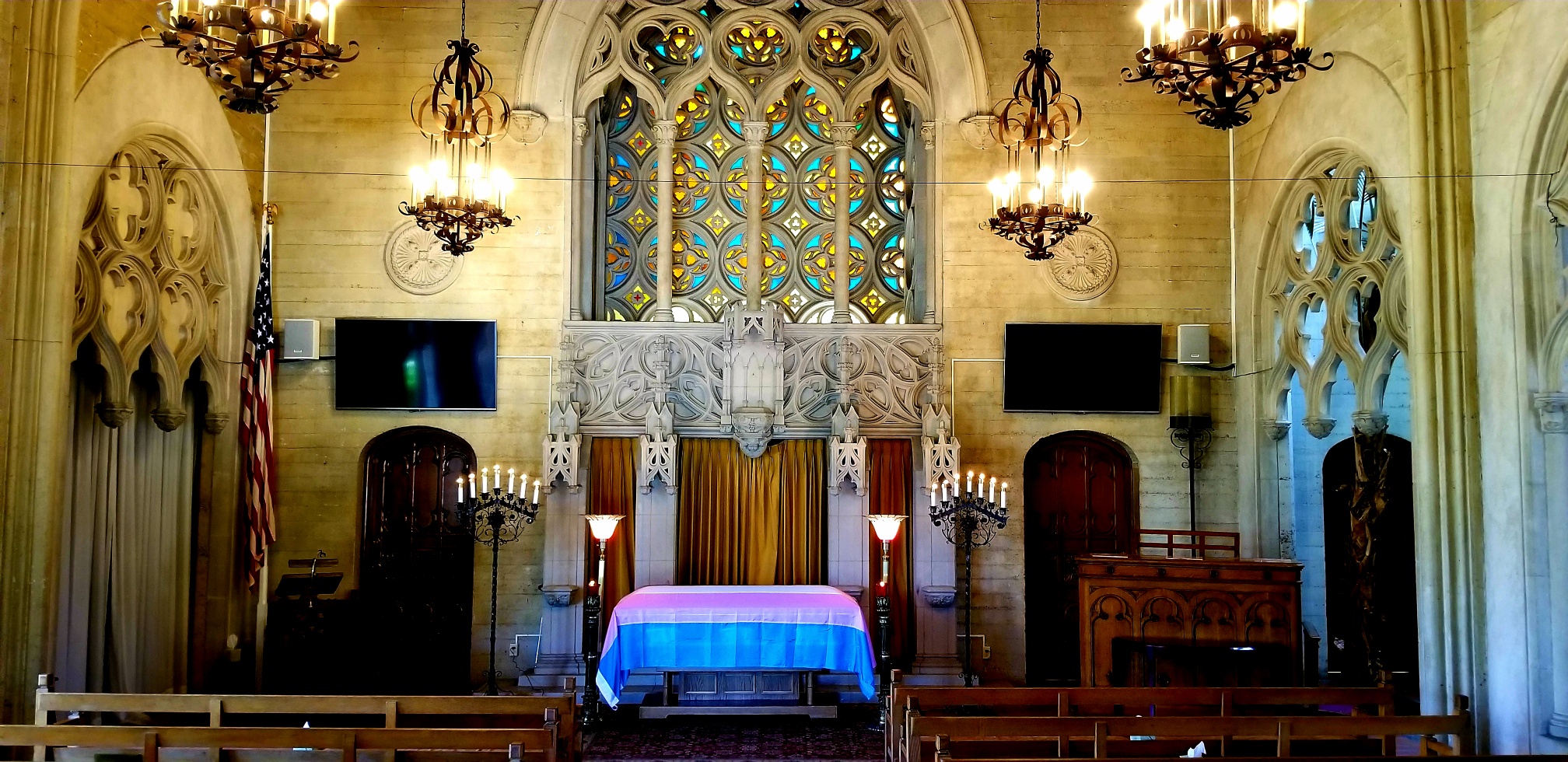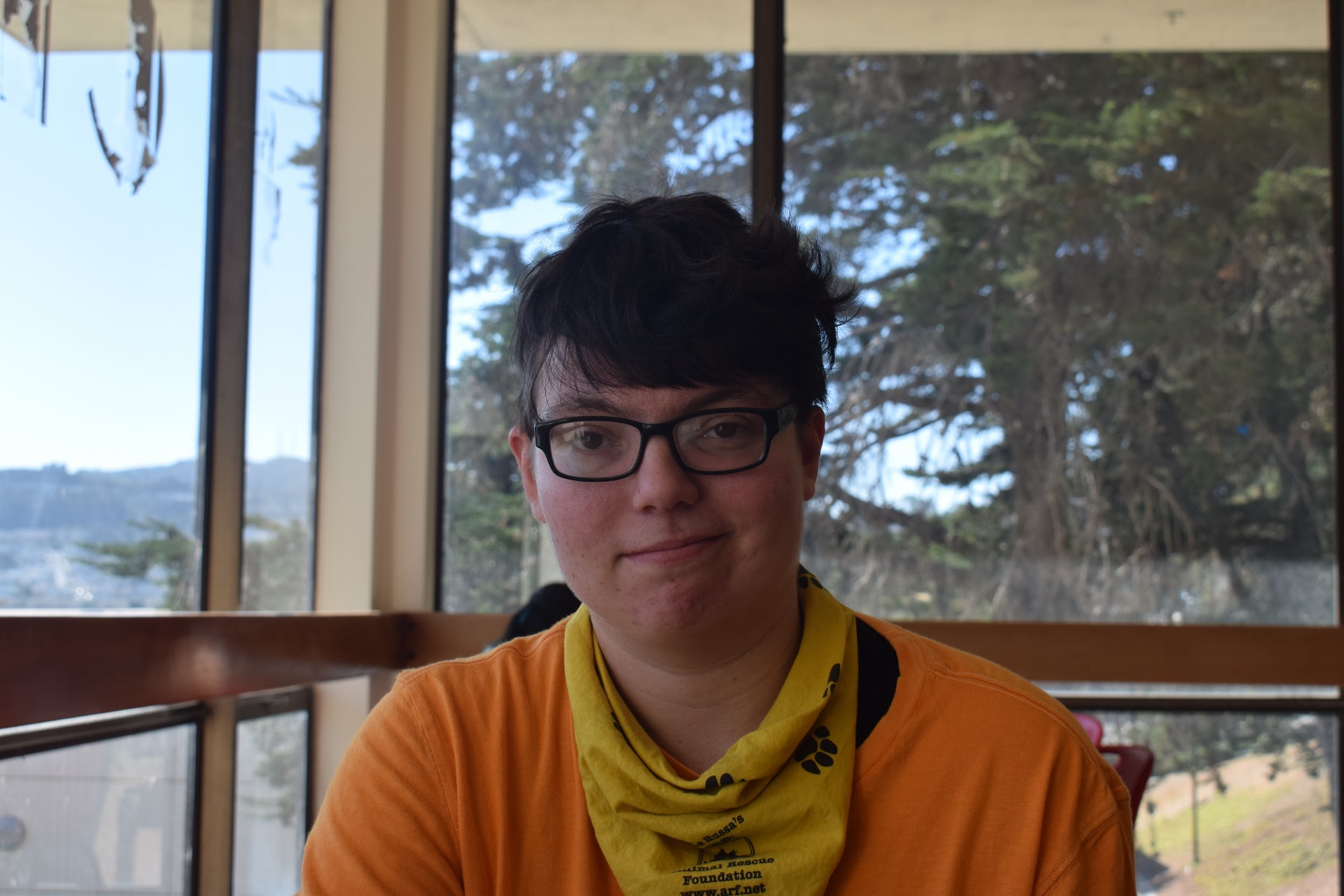Student’s college family lays him to rest
By David Mamaril Horowitz
dhorowitz@theguardsman.com

Daine Faolan Grey, a transgender City College student, found his family at the college Queer Resource Center.
And his family laid him to rest after he took his own life on July 2.
For two weeks, Grey’s estranged family did not claim his body, so QRC lab aide Lady Katerina did so with the assistance of her advisers. She also began a GoFundMe fundraiser for Grey’s final dignity rights. Led by the QRC LGBT community, the cause — which had more than one thousand donors — raised more than $26,000 in 15 days.
“It shows how strong and willing the LGBT community is to be there for one of their own,” said Michael Phipps, the ex-fiancé of Grey when he was still alive. “It means the world to me because I actually got to say goodbye.”
The funeral was held on July 26 in the Oakland Chapel of the Chimes, which had offered to help cover service costs if Katerina could not. More than one hundred people attended, and dozens from the LGBT community at City College and beyond joined Grey’s mother Stephanie Haught and her side of the family at the service.
The San Francisco Gay Men’s Chorus had volunteered to sing three numbers, and the LGBT activist organization Sisters of Perpetual Indulgence was also present.
“Daine was a warrior — he fought to live,” Katerina said at the funeral. “He gave all that he could until he could give no more. He loved until he could love no more. Daine fought for his life, and today, we honor that life.”

Resonating with that statement, the chorus followed with the song, “Singing for our Lives.”
Dressed in a yellow floral shirt, a dark gray-blue suit, a navy-blue tie, colorful puzzle socks and blue suede shoes, Grey was laid to rest surrounded by his close friends and family. At the private burial, Grey’s casket was covered in an enormous transgender flag that was given to Stephanie.
The funeral and burial were two of several events held to provide final dignities for Grey. A private service was also held the day before for Grey’s father Lance Haught and his side of the family.
When Lance first learned about his son, he was too grief-stricken to claim the body himself, according to a statement he wrote for the press. Instead, he directed his lawyer to send Grey’s remains to a crematorium. But the lawyer was unable to, and did not communicate to Lance the urgency of claiming his son’s body.
“I spent the next week trying to come to terms with the situation and was only made aware of the time issue when I received a phone call from a member of the press,” Lance stated. He added that it was grief — not abandonment — that had prevented him from claiming his son’s body for two weeks.
It was nine business days after Grey’s passing that Katerina contacted the Office of the Medical Examiner. She was told that the next day, July 16, interested parties could begin the process to claim Grey’s body. That was when she requested Grey’s body and started the fundraiser.
News outlets soon caught wind of the situation. Katerina eventually communicated and cooperated with Lance and Stephanie, who are separated, in securing Grey’s final dignity rights. Altogether, Stephanie’s side of the family contributed nearly $8,500. But by then, news outlets had already reported a simplified story without providing the nuances and details of a very complicated situation.
As a result, the initial narrative — that a transgender student was disowned by his family and committed suicide — had circulated the internet. Grey’s parents, Lance and Stephanie, had already been demonized in the public eye.
Grey grew up in an abusive household, and his father did rule with an iron fist, Phipps said. Moreover, Grey himself would tell friends his family had disowned him. But the narrative that his family’s rejection of him was what led to his death was still false, Katerina said.
Meanwhile, she and QRC representatives had convinced the City College administration following Grey’s death to reopen the QRC, which was closed over the summer. For two weeks, it stayed open to provide support for the college’s LGBT community. Many who knew Grey considered it a band-aid-solution to a long-term issue that affects thousands of students at City College: Resource centers have historically been under-funded, and many have been closed over the summer. For example, since the college’s accreditation crisis in 2013, the QRC has had its budget cut by more than 40 percent, QRC faculty adviser Mark Piper said.
“Every resource center is geared for unique populations — unprivileged populations,” Katerina said. Having told donors she would do so since the beginning of her fundraiser, Katerina donated the remaining $6,000 after Grey’s dignity expenses to the QRC. It currently provides the center food, and it also funds advocacy and educational programming for queer and transgender issues among the college community.
“[Resource centers] are a matter of life and death for a lot of our students,” Katerina said.
After Grey came out as transgender last September and started work at the QRC last spring, his friends watched him flourish. He is often likened to a butterfly.
Grey had struggled with suicidal tendencies and had been hospitalized many times, Grey’s friends told Katerina. But those incidents stopped occurring as Grey spent more time with the QRC and learned to live more openly as himself, she said.
“When the QRC was open, his depression practically disintegrated; he was happier than I had ever seen him in years,” Phipps said. “That was his family. They were good as blood. They were better than blood: They treated him better than his own blood.”
But Phipps does not fault the college for Grey’s death. “I don’t blame the QRC,” Phipps said. “I don’t blame the college. The college didn’t know — the college couldn’t have known. But if this happens again because of the QRC getting closed down, I fully hold the college responsible because it’s happened once.”
“You can’t play this game of ‘If only’ or ‘I wish,’” City College and QRC student Marilyn Mena said. “We can only accept the fact that Daine made a decision, and we have to respect it… what he left us is a little piece of memory of him in each of us, and we will cherish that memory of him to go forward.”
